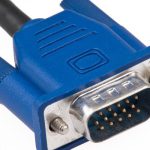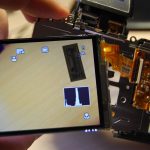
The Internet of Things (IoT)
The number of “things” getting connected to the internet is growing profoundly. It is estimated that machine-to-machine connections will represent close to 50% of the internet connections in the near future. Most of these connections will be wireless. Despite there being numerous wireless networks through which IoT devices can be connected, Wi-Fi has proven to be the most dominant network to connect devices to the internet. However, it is not the easiest or most effective way to connect devices to the internet. Below we are going to discuss several methods you can use to connect IoT devices to the internet.
Challenges of connecting devices to the Wi-Fi
Previously, devices used to be largely powered by 8-bit controllers, however, nowadays, they are powered by complex computer systems by advanced 1-bit DAC microcontrollers. The DAC controllers offer additional computing power and larger data storage space. Despite all that, developing a proprietary system for connecting these devices to the internet is still beyond the manufacturer’s capabilities. Owing to this, the pre-existing integrated Wi-Fi solutions are affordable and enable manufacturers to the product to the market fast.
Most “things” being connected to the internet are also very small and do not have a display or capability to enter data hence allowing users to configure them. These devices have to be configured by devices by a smarter device that is able to transmit the configuration information to the Wi-Fi network.
Method 1: Using Wi-Fi protected setup (WPS)
Some devices come equipped with a WPS button. Such devices assume the user’s wireless router also has a WPS button. As such, you press the WPS button on the device and also that on the wireless router. This method won’t work is either the router or the device does not have the WPS button. The is also a possibility that when the WPS buttons are pressed and the device does not show up on the network
Method 2: Allow device’s SSID to show up
Let the device appear as an access point with its own SSID and passphrase that is supplied alongside the manufacturer’s quick start card. In this method, when the device is powered, its SSID is broadcast so that it easily identified. One can then connect wirelessly to the device, enter the SSID and network passphrase thus configuring the device as a client on their network. This method, however, requires a lot of expertise. It’s also time-consuming more if there are several devices to be installed.
Method 3: Listen mode-only
The user can put their device on listen-only mode and wait for configuration. Depending on the type of the device it might be advisable to configure in a certain mode or specific network. The user can then navigate the basic menu required for getting the device configured to the home network. After configuration, to keep out the device from hackers, allow the device to lock itself down from any future reconfiguration as an assurance that it will only be managed by authorized users. As such, one would have to press the button to access the device.






















1 Comment